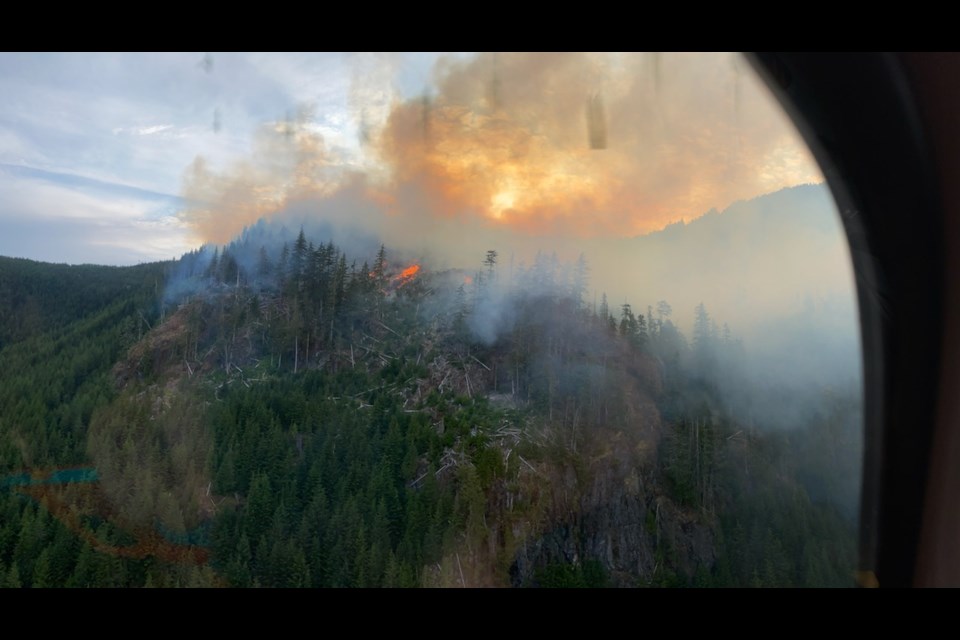A wildfire burning out of control on Green Mountain southwest of Nanaimo poses a potential threat to Vancouver Island marmots.
Adam Taylor, executive director of the Marmot Recovery Foundation, said his team is still trying to determine where exactly the 16-hectare fire is burning on the mountain, which provides important habitat for the critically endangered herbivores.
“The short-term concern is that we’ll lose marmots as a result of the fire,” he said. “Marmots do have relatively deep burrows and they can weather low-intensity fires.
“If it’s a high intensity fire, then we just have to cross our fingers and hope that the marmots move off. They do have other escape options. It’s a good ridge for marmots. There are other colonies.”
The B.C. Wildfire Service has 45 firefighters and four helicopters battling the blaze, which began with a suspected lightning strike on Friday and grew to 16 hectares by Saturday.
“There was no size change overnight,” Dorthe Jakobsen, a fire information officer with the Coastal Fire Centre in Parksville, said Sunday.
“We’re making very good progress on it.”
But she said it’s a difficult place to fight a fire. “It’s the top of a mountain so access is quite challenging.”
Researchers with the Marmot Recovery Foundation have been unable to visit Green Mountain this year to do a population count.
One marmot was spotted there last summer and there may be others, but the adjacent ridge line is home to many more and “absolutely central to the recovery effort,” Taylor said.
“So we really hope that fire is contained, and doesn’t continue to spread and spread along that ridge line where we could lose a lot more marmots and a lot more habitat pretty quickly.”
Cheyney Jackson, the foundation’s field coordinator, said the potential loss of forage is a major concern.
“We're now in August and marmots start to prepare their bodies for hibernation at the end of this month to start hibernating potentially in September, October,” she said. “So they have this really narrow window to sort of prepare their bodies to gain enough weight to be able to survive their next hibernation.
“So we're obviously wanting to confirm that they’re going to do well, that there’s still forage available for them at that location and, if not, that there's somewhere for them to go.”
In the long-term, the fire could actually have a positive impact by restoring marmot habitat, Jackson said. The animals need open spaces so they can spot predators and hide from them. But with climate change, trees are encroaching into areas where they might have been unable to survive previously due to heavy snow and avalanches.
“But, certainly in the short term, it’s concerning,” Taylor said. “It’s very close to, if not right in, marmot habitat.
“So it’s difficult for us. We have to sit here and watch, and we’re grateful to everybody who’s fighting that fire. It’s not an easy area to work in. We know that quite well.”
Any loss of marmots would be a tough blow for recovery efforts that have used breeding programs and habit protections to rebuild the population from a low of fewer than 30 animals in 2003.
Nearly 200 marmots were observed last year, down from a high of 346 in 2013 before weather and predators took a toll on numbers.



